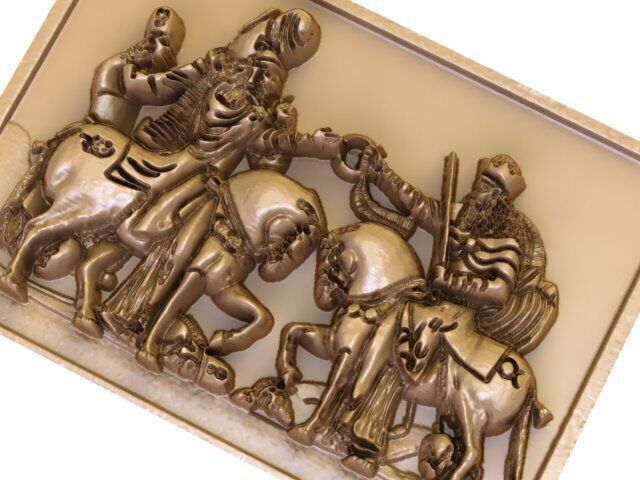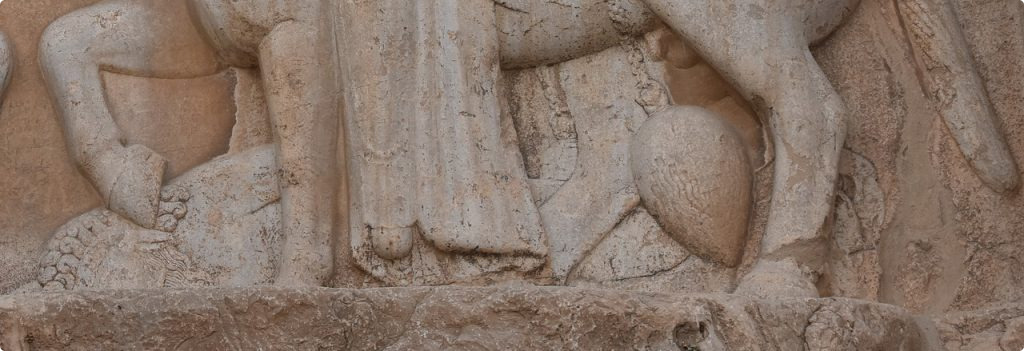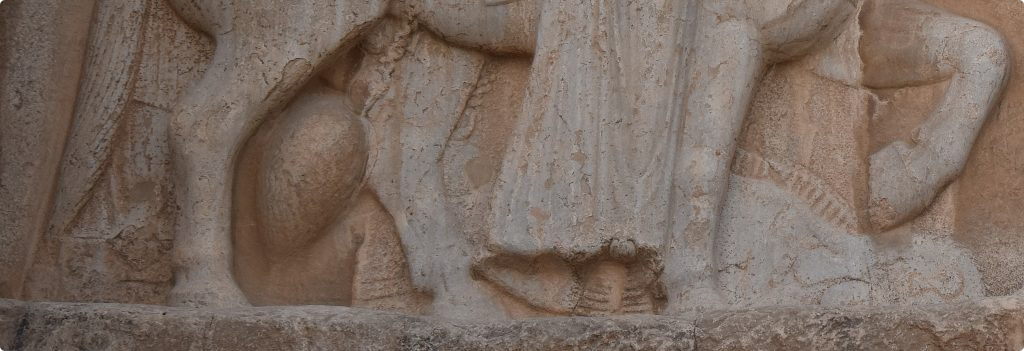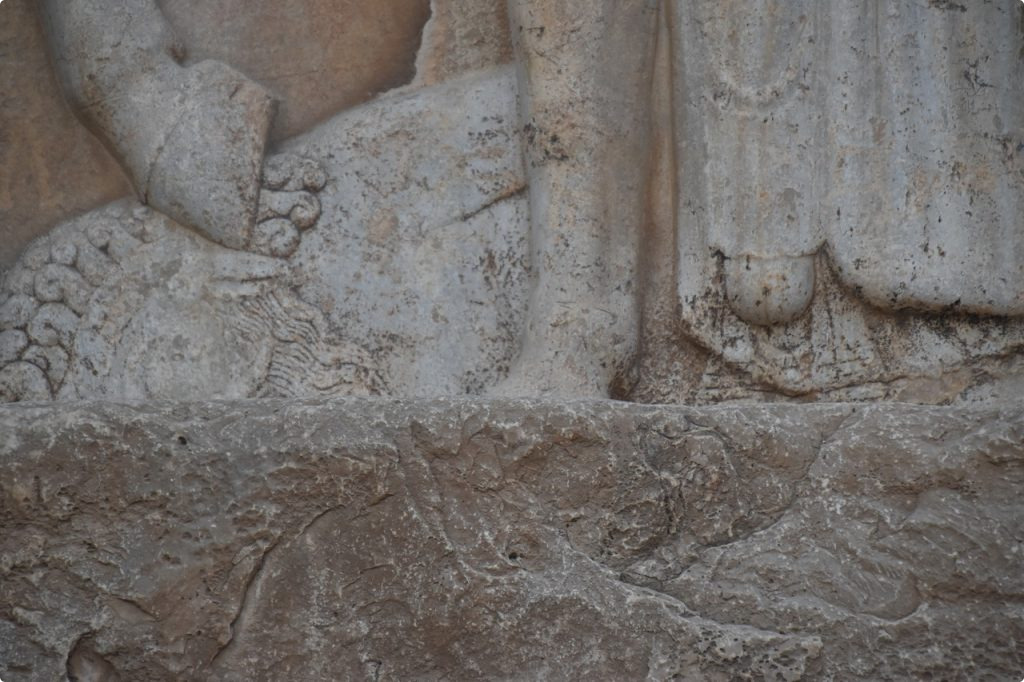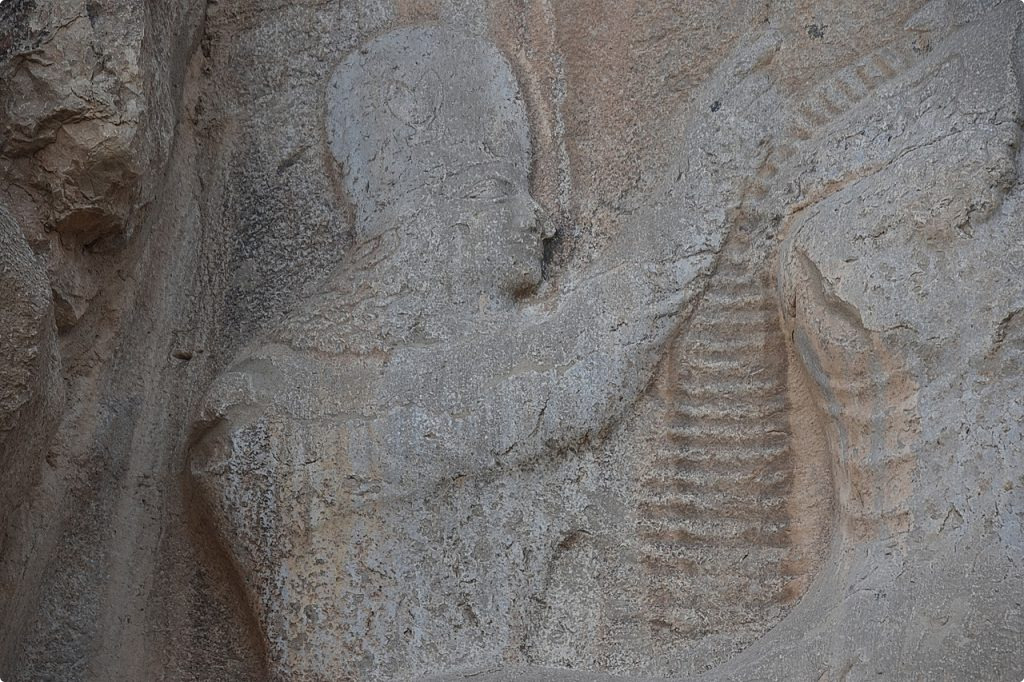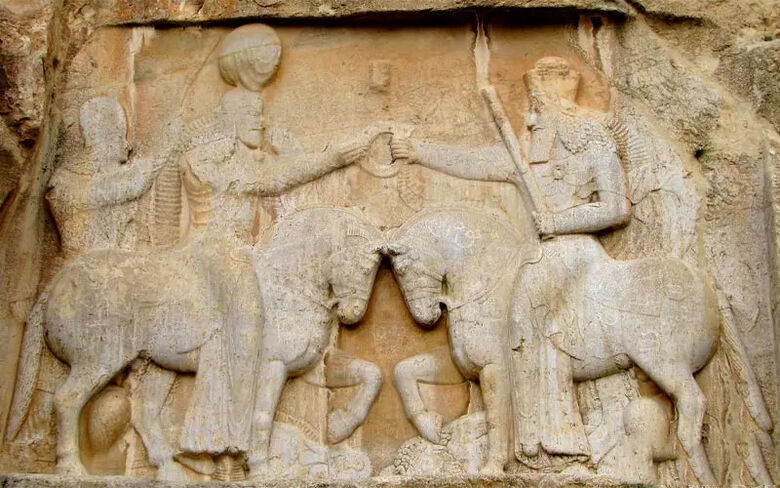
Ancient Persia----Naghsh-e Rustam 3D model
The scene Appointing Ahura Mazda Ardshir as King is located two meters above the ground in Naqsh-e Rustam, with a width ranging from 6.30 to 6.65 meters and a height of 2.40 meters. Here, King Ardshir is depicted on the left side of the scene. He is riding a horse, seen in profile, and is looking at Ahura Mazda—who is also depicted riding a horse, facing right and shown in profile—while receiving the diadem of kingship from him. Behind the king stands a youth holding a fly whisk, and beneath Ardshir's horse lies the lifeless body of Ardavan, the last king of the Parthians, on the ground. Correspondingly, the body of the evil spirit is crushed beneath Ahura Mazda's feet. Both Ardshir and Ahura Mazda are introduced by trilingual inscriptions.Ahura Mazda is depicted facing left and wears a crenellated crown, with his curly hair visible above the crown. The flowing ends of his curly hair drape over his shoulder, and a long, wavy ribbon is seen behind him. His long, curly beard has an almost rectangular shape and resembles Ardshir's beard seen on some of his coins. He wears a cloak that drapes over his back with folds, and its two edges are fastened in front by a buckle. His coat, waist, and trousers are similar to those of the king, but his feet, adorned with hanging ribbons, are clearly visible. Ahura Mazda extends his right hand to present the diadem of kingship to Ardshir, with two wide, wavy ribbons of the diadem cascading towards Ahura Mazda. His left hand is slightly raised, holding a long, staff-like object upward but slightly angled. Some have interpreted this object as a royal scepter; however, a royal scepter was never of such thickness or short length and was usually held in a downward position. Thus, the view of those scholars who describe it as “branches of Barsom” is correct, especially since we see the branches of Barsom depicted in similar form held by Zoroastrian priests in the artifacts from the Achaemenid period (for instance, in the golden plates of the Sikhan treasure) and in the depiction of Ahura Mazda by Antiochus of Commagene. It is not surprising that Ahura Mazda, the king of the priests, is portrayed with their specific emblem—the branches of Barsom.
The horses of Ardshir and Ahura Mazda have very small bodies, so much so that the riders’ feet reach the ground; both animals are elegantly saddled and bridled, with their foreheads touching, one leg bent and resting on the bodies lying on the ground. Ribbons hang from their saddles, ending in large, conical tassels. Such decorations were customary among riders since ancient times and still have evolved and smaller versions can be seen in various parts of Iran. The breast strap of the king's horse is made up of circular rings, each adorned with the head of a roaring lion, while the breast strap of Ahura Mazda’s horse consists of rings encompassed within a square frame and is decorated with floral designs. The manes and tails of both horses are meticulously groomed.

